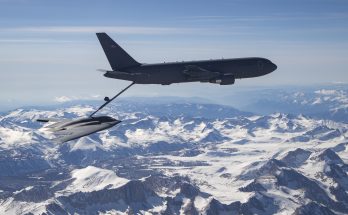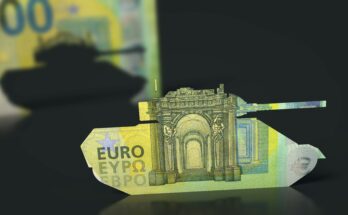by Stuart Slade, Senior Naval Systems Analyst, Forecast International.
The French DCNS Group has beaten competitors from Germany and Japan to secure the contract to build Australia’s next fleet of submarines. DCNS offered the Shortfin Barracuda, which is a modified version of the French Navy’s nuclear submarine. The much anticipated $38.5 billion contract ensures that the 12 new submarines will be built at Adelaide’s Osborne shipyards.
So, why did the French win? One reason is the very nature of their offer. The Shortfin Barracuda is a conventional derivative of their Barracuda nuclear attack submarine and draws on the most advanced technology available to the French designers. With the sole exception of nuclear power – an alternative the Australian government resolutely refused to consider – the Australian Navy will be getting the same submarine as the French Navy. It is also reported that the French bid included a commitment not to offer that advanced technology to Australia’s neighbors.
This is not the only factor in the French victory, though. The French negotiating team played to their strengths in more than just a technical sense. They brought into play their considerable experience in managing complex multinational projects and in transferring technology so that their submarines could be built in foreign yards. This was a key political factor in the Australian contest, since the need to keep the shipbuilding industry, and the jobs it represents, alive is a major electoral football. Prime Minister Malcolm Turnbull admitted that the French selection would involve paying a premium to keep shipyard jobs in Australia.
The decision is a severe blow for the Japanese shipbuilding industry that saw a win for the Mitsubishi/Kawasaki consortium as a major turning point for Japan’s broader defense policy, as well as being Japan’s first export of a major weapon system. The consortium offered an evolved version of its 4000-tonne Soryu class submarine, to be lengthened by 6 to 8 meters, mostly to provide the space for additional fuel and batteries to increase its range and for roomier crew accommodation.
Japan is undoubtedly adept at making the type of quiet-running, diesel-powered vessels the Australians sought, and for a while it appeared as if the Japanese bid was in the leading position. However, the Japanese were reluctant to disclose details of some of the technologies they were offering and were inexperienced in setting up the kind of complex multinational deal inherent in the Australian requirement. In the final analysis, it was this lack of expertise and the failure to understand the political necessity of building the submarines in Australia that doomed Japan’s bid.
The German bidders also expressed disappointment at the decision. ThyssenKrupp Marine Systems’ Australian chairman, John White, said the company respected the government’s decision. “We are naturally disappointed, but we stand ready to provide support for Australia’s future submarines project with our unrivaled experience, leading technology, and track record in building submarines in the customer’s own country.”
Germany was offering a 4,000-ton submarine, the Type 216, that exploited technologies developed for the 2,000-ton Type 214, and therein lay the seeds of its loss. The Australian Navy operates an existing class of submarine, the Collins class, which was also the result of attempting to scale up a design from a smaller ancestor. The result was far from satisfactory and the Australians were left with the opinion that such design exercises were, at best, surrounded by difficulties. That opinion is well based; submarine designs are only marginally scalable. TKMS understands that well, and their offer was based around a new design that simply shared technology with its smaller cousin. However, there is little doubt that memories of the Collins class persisted, and in a tightly fought competition, that may well have been enough to bump the German design from the lead.
So the winning design has been selected, marking a major victory for DCNS. President Francois Hollande said in a statement that the deal was a “decisive step forward” in the strategic partnership between France and Australia. Defense Minister Jean-Yves Le Drian told Europe 1 radio that the contract represents a “major victory for the French naval industry” that would create thousands of new jobs.
Please feel free to use this content with Forecast International and analyst attributions, along with a link to the article. Contact Ray Peterson at +1 (203) 426-0800 or via email at ray.peterson@forecast1.com for additional analysis.
FI’s Warships Forecast identifies the areas of greatest opportunity, and is the ultimate source of information on the requirements of naval fleets and on warship production over the next decade.
For 50 years, Forecast International intelligence reports have been the aerospace and defense industry standard for accurate research, analysis, and projections. Our experienced analysts compile, evaluate, and present accurate data for decision makers. FI's market research reports offer concise analysis of individual programs and identify market opportunities. Each report includes a program overview, detailed statistics, recent developments and a competitive analysis, culminating in production forecasts spanning 10 or 15 years. Let our market intelligence reports be a key part of reducing uncertainties and mastering your specific market and its growth potential. Find out more at www.forecastinternational.com




